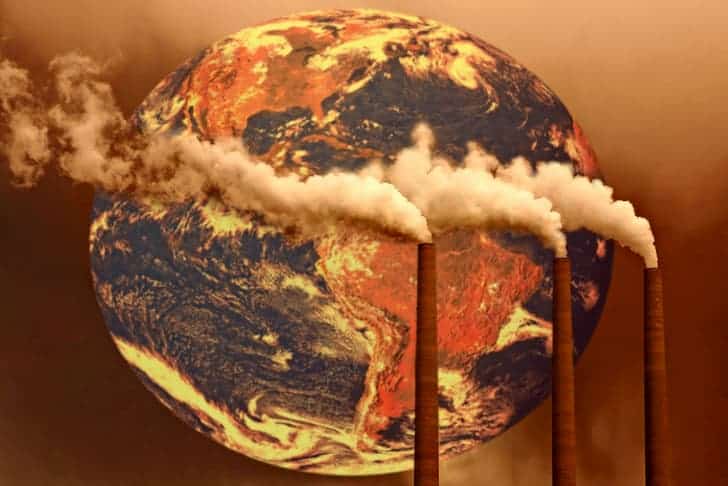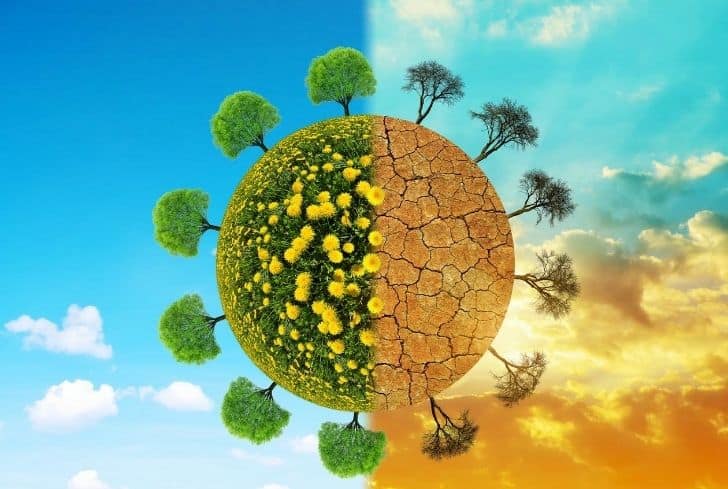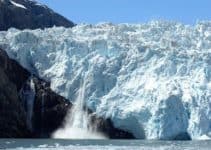Global warming is a hot topic these days. The debate over global warming has been going all around the world. While few consider it as its biggest challenge of all times, others consider it as a climate shift that occurred in the early 90s and has fallen flat since then.
Those who believe global warming has their own scientific reasons to back their claims; others have their own reasons to disregard their theory. Understanding global warming and its impact is important to meet the challenges posed by it.
If you want to start a lively conversation going the next time you are out among friends, ask if people think global warming is real. It is a hot button issue for many and the arguments for and against global warming can be confusing as they may appear to use the same data to prove different results. Here are the top 5 arguments for and against global warming.
More from global warming:
- Various global warming facts
- Global warming effects
- 35 easy ways to stop global warming
- Causes of global warming
- Steps to reduce global warming
- 30 Myths vs. Facts on Global Warming
- How global warming works?
5 Arguments To Prove Global Warming is Real
Scientists who argue for global warming being real base most of their evidence on the interpretation of the change in the levels of gases in the atmosphere and the ocean.
The actual warming of temperature is something they say they can document, but the primary evidence is drawn from detecting what precedes a temperature rise – the change and effect of atmospheric gases on the Earth’s environment.
Argument 1 – Rise in Sea Level
The sea level is rising in many areas of the world. This is partially attributed to the melting of ice caps and glaciers, but more to the changes in the gases contained within the sea. In the past decade, the global mean sea levels have doubled compared to the 20th-century trend of 1.6 mm per year and is accelerating slightly every year. The global sea levels rose about 8 inches in the last century.
According to a research climate change–driven accelerated sea-level rise detected in the altimeter era and it says, if sea level continues to change at this rate and acceleration, sea-level rise by 2100 (∼65 cm) will be more than double the amount if the rate was constant at 3 mm/y.
Argument 2 – Rise in Earth’s Average Temperature
Global temperature rises during the past century and a half continues. Tracking global atmospheric temperatures since the 1800s, scientists point to a steady rise with a stronger period in the 70s, a lull in the 90s and a return to the rising pattern in the 2000s.
Since the late 19th century, the planet’s average surface temperature has risen about 1.62 degrees Fahrenheit (0.9 degrees Celsius), a change driven largely by increased carbon dioxide and other human-made emissions into the atmosphere.
Most of the warming occurred in the past 35 years, with the six warmest years on record taking place since 2014. NASA, NOAA Data Show, not only was 2016 the warmest year on record, but eight out of the total 12 months that make up the year from January through September, with the exception of June were the warmest on record for those respective months.
Argument 3 – Rise in Ocean Temperature
The rise in the number of vehicles and industries has resulted in greenhouse gases getting trapped in the atmosphere. The increased heat in the atmosphere from greenhouse gas emissions has been absorbed by the oceans with the top 700 meters (about 2,300 feet) of ocean showing warming of more than 0.4 degrees Fahrenheit since 1969.
There are over 50 years of documented temperature records for the oceans that have recorded a steady rise in its temperature since 1969.
In addition, 2019 was the warmest in the 65-year record of ocean observations, based on the analysis by researchers from NCEI and the Institute of Atmospheric Physics in Beijing. The five highest years on record for annual ocean heat content (OHC) are 2015–2019. “These data reveal that the world oceans were the warmest in recorded human history in 2019,” the authors concluded.
Argument 4 – Shrinking Glaciers
Glaciers are so sensitive to temperature fluctuations that they provide clues about the effects of global warming. The glaciers on several mountain ranges, particularly in Greenland and Antarctica, are decreasing in size due to the reduction in gases that help to maintain temperatures and changes in the region’s climate. This is the case almost everywhere around the world including in the Alps, Himalayas, Andes, Rockies, Alaska and Africa.
Studies conducted by NASA’s Gravity Recovery and Climate Experiment show Greenland lost 36 to 60 cubic miles of ice every year between 2000 and 2006.
Argument 5 – Ocean Acidification
Since the beginning of the Industrial Revolution, the acidity of surface ocean waters has increased by about 30 percent. The acid level in the ocean is increasing, which is making the oceans of the world more acidic.
This is due to the emission of more harmful gases like carbon dioxide in the atmosphere by humans, which is getting absorbed by the oceans. This is resulting in an increase of algae blooms and mass fish deaths, as well as a change to the chemical composition of the water.
The amount of carbon dioxide absorbed by the upper layer of the oceans is increasing by about 2 billion tons per year.

5 Arguments To Prove Global Warming Isn’t Real
Many scientists make a strong case against global warming being real. They often look towards the same evidence as those in favor of proving its existence but draw different conclusions. They also look at some evidence not considered in other arguments. These scientists hold to a strict definition of global warming as being defined as a rise in atmospheric temperature; they do not consider the atmospheric precursors as valid evidence.
Argument 1 – No Significant and Prolonged Temperature Changes Since 1997
Scientists who argue against global warming say global warming isn’t real because since the 90s there hasn’t been a significant temperature change. The upswing in the temperature started from 1975, continued till 1997, and the temperature has been flat since then, which clearly states that there isn’t any significant change in temperature in the last 17 years.
The natural variability, volcanic eruptions, and relatively low solar activity, the rate of average global surface warming from 1998-2012 were slower than it had been for two to three decades leading up to it that raise the slowdown into a slogan: “Global warming stopped in 1998.”
In scientific journals and assessment reports, climate experts described the episode as a “pause” or “hiatus” in the previous decades’ rapid warming.
Argument 2 – Not Enough Historical Data Available
There is no consensus about global warming being real among scientists. Advocates also point towards the fact that a recent gathering of 31,000 scientists in the field of environmental science couldn’t reach a consensus on whether or not global warming is real. They believe that they don’t have long term historical climate data, or the data they have isn’t clear.
We search for the clearest indicators of climate change that we can present to the public so that they can understand what is happening, face reality, and adapt.
Argument 3 – Arctic Ice Increased by 50% Since 2012
Arctic ice increased in volume by 50% in 2012 alone. Core measures of the Arctic ice show that it has increased in volume since 2012, which argues against global warming, causing ice caps to melt.
Climate Depot reported that the latest figures from the National Snow and Ice Data Center, located at the University of Colorado, show that sea ice extent has increased by 40 percent since 2012 – The Danish Polar Portal, which monitors ice and climate in the Arctic, reported on the 12th of September this year.
Few people have even predicted that global warming would cause whole Arctic ice to melt, which contradicts their version.
Argument 4 – Climate Models used are Proven to be Unreliable
The climate model calculations used to predict the effect of global warming have been proven to be flawed, which means that the long term predictions that they have been making are meaningless. Some scientists even argue that any increase in global temperatures could be a natural climate shift.
It is important to note that computer models cannot exactly predict the future, since there are so many unknowns concerning what might happen. Scientists model a range of possible future climates using different scenarios of what the world will ‘look like.’
Each scenario makes different assumptions about important factors. The resulting projection of the future climate for each scenario gives various possibilities for the temperature but within a defined range.
Argument 5 – Early Predictions about the Effects of Warming Have Been Proven Wrong
Advocates who promote arguments against global warming being real, point towards all the dates that have come and gone where predictions were made about effects that never happened. Some instances of wrong predictions are:
i) Al Gore predicted that all Arctic ice would be gone by 2013. But, on the contrary, Arctic ice is up by 50% since 2012.
ii) In January 1970, Life reported, “Scientists have solid experimental and theoretical evidence to support…the following predictions: In a decade, urban dwellers will have to wear gas masks to survive air pollution…by 1985 air pollution will have reduced the amount of sunlight reaching earth by one half….”. But the case is not the same till now.
iii) Climate, preacher/scientist Alexandria Ocasio-Cortez, predicted last year that “We’re like… the world is gonna end in 12 years if we don’t address climate change.” We are to see whether this prediction made last year around the time of Earth Day 2019 will materialize.v
Which Argument to Believe?
The main part of the problem lies in the two groups using different definitions of how global warming appears in the climate. This is one of the reasons that those advocating that global warming is real now use the term “climate change” since it is more reflective of the real issue.
The other problem lies in proof, and in studies that try to prove whether or not global warming is real. Contrary to public belief, the results of all scientific studies aren’t conclusive.
To be considered proof of a hypothesis, the studies have to be able to be replicated by others and produce the same results. With global warming studies, analysis of decades of weather data is often used. The first problem is that weather data from 100 years ago wasn’t kept to modern standards of evidence.
The second problem is that analysis is interpretation; you can really put any spin on it. This is why some of the arguments for and against whether global warming is real can use the same data and come to different conclusions.
References:






